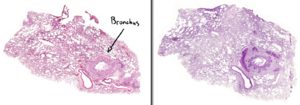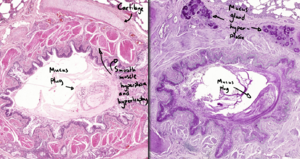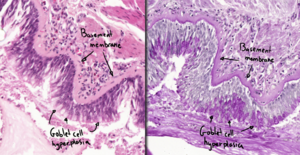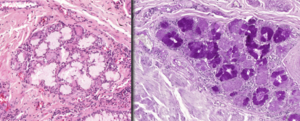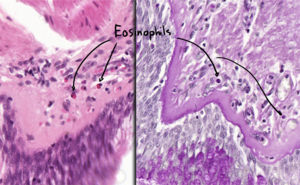47. Bronchial asthma
Staining: HE and PAS
Organ: Lung
Description:
The lung parenchyme is normal. However, the bronchus shows 6 alterations:
- A mucus plug in the lumen
- Goblet cell hyperplasia in the respiratory lumen
- Thickened basement membrane
- Lymphocytes, eosinophils in the sub-epithelial layer
- Smooth muscle hypertrophy and hyperplasia
- Mucus gland hyperplasia
Alteration 1, 2, 3 and 6 are PAS positive
Diagnosis: Bronchial asthma
Etiology:
- Hypersensitivity type 1 reaction
Theory:
The slide exists in both PAS and HE form. They’re both taken from the same preparation, at approximately the same height.
Asthma is a chronic inflammatory disorder of the airways that causes recurrent acute episodes of wheezing and cough. Intermittent and reversible airway obstruction is characteristic, along with eosinophilic inflammation of the bronchi, smooth muscle hypertrophy and hyperplasia and increased mucus production.
We can recognize that we’re looking at a bronchus by the presence of cartilage.
Recognize eosinophils for extra points on the exam.
